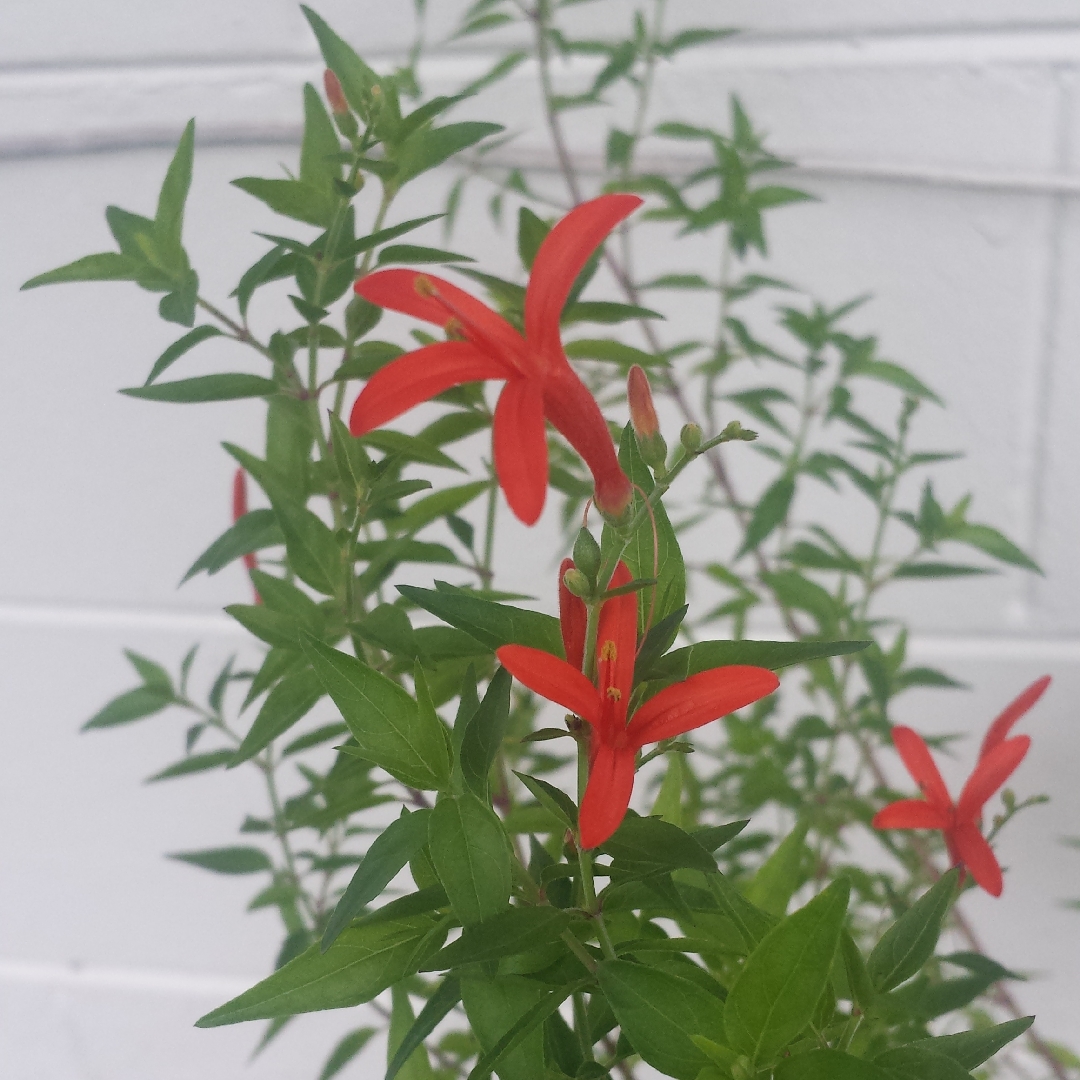
Anisacanthus Quadrifidus
Flame Acanthus
'Flame Acanthus' is a small shrub, native to part of Mexico. It has lance-shaped leaves and bears bright red to orange trumpet-shaped flowers from Summer to the late Autumn that attract hummingbirds and butterflies. It has an interesting bark that provides a focal point in the Winter and early Spring.
Contributed by @treefrog44
-
Full sun to partial shade
-
Occasional watering
-
Frost Hardy: 23F (-5°C)
-
Moist and free draining
Common name
Flame Acanthus
Latin name
Anisacanthus Quadrifidus
type
Shrub
family
Acanthaceae
ph
6.1 - 7.8 Acid - Neutral
Plant & bloom calendar
-
Best time to plant
-
When the plant will bloom
full grown dimensions
 1.00 M
1.20 M
1.00 M
1.20 M
Anisacanthus Quadrifidus
'Flame Acanthus' is a small shrub, native to part of Mexico. It has lance-shaped leaves and bears bright red to orange trumpet-shaped flowers from Summer to the late Autumn that attract hummingbirds and butterflies. It has an interesting bark that provides a focal point in the Winter and early Spring.
Flowering
From Early Summer TO Early Autumn
The flowers appear fall through Summer to frost
Planting
From Early Spring TO Mid Spring
First dig in some well-rotted manure into the top 6" or o, and then dig a hole as deep as the root ball and twice as wide. Place the plant in the hole, carefully spreading the roots, then fill back with soil, and water well.
Propagating by seed
From Early Spring TO Late Spring
The plant will self-seed - and can be invasive (so if new seedlings are not required, cut off flower-heads before the seeds form)









